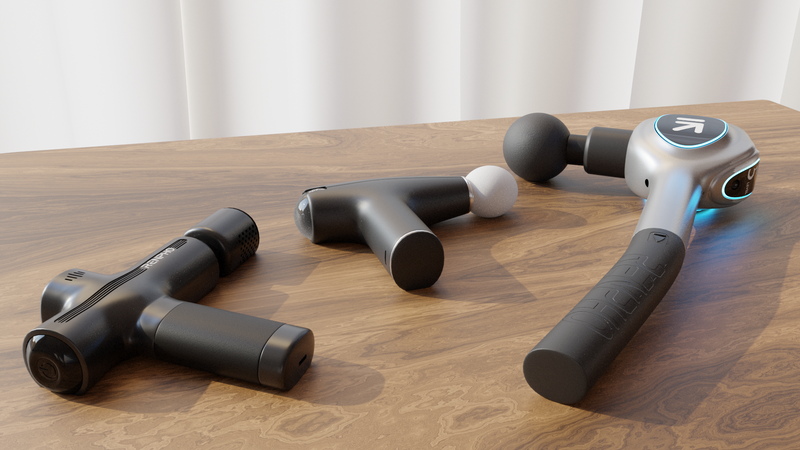Neck sprains are a common occurrence that can happen to anyone, at any age, and often result in significant discomfort and limited mobility. Whether you've recently experienced it or want to be prepared, let’s delve into the causes behind neck sprains, explore more about this common condition.
By understanding the underlying causes, you'll be better equipped to make lifestyle adjustments and take preventive measures to minimize the risk of experiencing a neck sprain. Let's embark on this journey of understanding neck sprains together, empowering ourselves with knowledge to promote a healthy and resilient neck.
What is a Neck Sprain?

A neck sprain is a common injury that occurs when the ligaments in the neck are stretched or torn. This can happen as a result of sudden movements or trauma, such as a car accident or a fall. The ligaments in the neck help to stabilize the spine and allow for normal movement. When these ligaments are injured, it can cause pain, stiffness, and limited range of motion in the neck. Neck sprains can range from mild to severe, with symptoms varying depending on the extent of the injury. With proper treatment and care, most neck sprains can heal within a few weeks, but it is important to seek medical attention for a proper diagnosis and guidance on the best course of treatment.
What Causes Neck Sprains?
One common cause is prolonged periods spent in uncomfortable positions. When the neck is held in an awkward position for an extended duration, the muscles, tendons, and ligaments can become strained, leading to sprains and pain.
Trauma is another leading cause of neck sprains. Accidents, falls, or sudden jerks can result in a rapid and forceful movement of the neck, causing the ligaments and muscles to stretch beyond their normal range of motion. This, in turn, can cause sprains and discomfort.
Carrying heavy objects on one side of the body has also been linked to neck sprains. This unbalanced weight distribution can strain the muscles on that side, affecting the alignment and stability of the neck.
Sleeping with high or firm pillows can contribute to neck sprains as well. When the pillow is too high or firm, it can cause the neck to be positioned at an unnatural angle, leading to strain on the neck muscles and ligaments.
What Are the Symptoms of Neck Sprains?
Neck sprains are a common injury that can cause significant discomfort and limitations in daily activities. The primary symptom is neck pain, which can range from mild to severe. This pain is often worsened by movement and may extend to the shoulders, upper back, and even the arms. Along with neck pain, individuals with neck sprains may experience stiffness, making it difficult to turn their head or tilt it side to side.
Headaches at the back of the head are another symptom associated with neck sprains. These headaches can be dull or throbbing and often worsen with prolonged neck movements. Dizziness is also common, which can be attributed to the strain on the neck muscles and joints.
Symptoms of neck sprains can extend beyond the neck region. Numbness or tingling sensations in the hands or arms may occur due to nerve compression or irritation. Individuals may also experience ringing ears, increased fatigue, irritability, difficulty sleeping, and difficulty concentrating. These symptoms can be attributed to the pain, discomfort, and stress caused by the neck sprain.
What Is the Difference Between a Neck Sprain and a Neck Strain?

A neck sprain and a neck strain are both common neck injuries that can cause pain, stiffness, and limited mobility. However, there are key differences between the two in terms of their definitions, causes, and recovery timelines.
A neck sprain refers to damage to the ligaments and soft tissues surrounding the neck. This type of injury is often caused by traumatic events such as motor vehicle accidents or sports injuries. It can also occur due to extended periods in uncomfortable positions like poor posture or excessive phone or computer use. The recovery timeline for a neck sprain can vary depending on the severity of the injury, but typically ranges from a few days to several weeks. Treatment may involve rest, immobilization, physical therapy, and pain management.
On the other hand, a neck strain involves injury to the muscles and tendons in the neck. It is commonly caused by lifting or carrying heavy objects or by adopting improper sleeping positions. Neck strains can also result from repetitive motions or overuse of the neck muscles. The recovery timeline for a neck strain is generally shorter than that of a sprain, lasting from a few days to a couple of weeks. Treatment may involve rest, ice or heat therapy, over-the-counter pain relievers, and gentle stretching exercises.
When Do You Need to Seek Medical Help for Neck Sprain?

Individuals with neck sprains may be able to manage their symptoms at home with rest, ice, and over-the-counter pain medication. However, there are certain situations in which it is important to seek medical help.
Firstly, if the neck sprain is a result of a major trauma, such as a car accident or a fall from a great height, medical attention should be sought immediately. This is because there is a higher risk of more serious injuries, such as spinal fractures, that may require immediate medical intervention.
Secondly, if the symptoms of a neck sprain have worsened or not improved within a few days, it is advised to seek medical help. While it is common for the pain and stiffness to take some time to subside, persistent or escalating symptoms may indicate a more severe injury or underlying condition that needs to be addressed by a healthcare professional.
Additionally, troubling symptoms like numbness, tingling, weakness, or difficulty with balance should not be ignored. These symptoms may suggest nerve involvement or spinal cord compression, both of which require medical attention.
How to Treat Neck Sprain?

A neck sprain can be a painful and inconvenient condition, often caused by a sudden jerking or twisting of the head. Fortunately, there are several effective treatment methods that can help alleviate the symptoms and promote healing.
- Rest and Limiting Activities: It's essential to give your neck proper rest and avoid activities that may exacerbate the pain or strain the neck muscles further. Limit activities that involve repetitive neck movements or heavy lifting.
- Applying Ice or Heat: In the initial stages after the sprain, applying ice packs wrapped in a thin cloth to the affected area can help reduce pain and inflammation. Ice should be applied for about 15-20 minutes at a time, several times a day. After a few days, you can switch to using heat packs or taking warm showers to relax the muscles and improve blood circulation.
- Pain Medication: Over-the-counter nonsteroidal anti-inflammatory drugs (NSAIDs) such as ibuprofen or naproxen sodium can help alleviate pain and reduce inflammation. Always follow the recommended dosage and consult with a healthcare professional if you have any underlying health conditions or are taking other medications.
- Gentle Stretching and Range of Motion Exercises: Once the acute pain and inflammation have subsided, your healthcare provider may recommend gentle stretching exercises and range of motion exercises to improve flexibility and restore normal movement to the neck. These exercises should be done under the guidance of a healthcare professional or physical therapist to ensure they are performed correctly and without causing further injury.
- Physical Therapy: In more severe cases or if symptoms persist, your healthcare provider may recommend physical therapy. A physical therapist can provide targeted exercises, manual therapy, and modalities such as heat or ultrasound to promote healing, improve strength, and enhance flexibility.
- Posture Correction and Ergonomic Changes: Poor posture and ergonomics can contribute to neck sprains. Making adjustments to your workstation, using ergonomic pillows or supports, and practicing proper posture throughout the day can help reduce strain on the neck muscles and prevent future sprains.
- Supportive Devices: In some cases, your healthcare provider may recommend using supportive devices such as a neck brace or collar to provide stability and restrict movement while the neck heals. However, these devices are typically used for a short period and under professional guidance.
How to Prevent Neck Sprain?
Neck sprains can be painful and debilitating, but fortunately, there are strategies and exercises you can incorporate into your routine to prevent them. Maintaining good posture is crucial to preventing neck sprains. Be mindful of your posture while sitting and standing, keeping your head in line with your spine. It is important to avoid sudden movements or jerks, as they can strain the neck muscles and ligaments. Instead, make smooth, controlled movements when turning or bending.
Using proper lifting techniques is also essential for preventing neck sprains. When lifting heavy objects, bend your knees and use the power of your legs rather than relying on your back and neck. Hold the object close to your body and avoid twisting while lifting.
In addition to these strategies, specific exercises can help strengthen the neck and upper back muscles, reducing the risk of sprains. Some effective exercises include neck stretches, where you gently tilt your head from side to side, and shoulder shrugs, where you lift and lower your shoulders in a controlled manner. Upper back exercises like rows and reverse flies can also improve the strength and stability of the neck and upper back.
By following these strategies, maintaining good posture, avoiding sudden movements or jerks, and incorporating exercises to strengthen the neck and upper back, you can significantly reduce the risk of neck sprains and maintain a healthy and pain-free neck.
Takeaway
Neck sprains are a common injury that can occur due to prolonged uncomfortable positions, trauma, unbalanced weight distribution, or improper sleeping positions. Symptoms include neck pain, stiffness, headaches, and possible numbness or tingling in the hands or arms. Differentiating between neck sprains and strains is important, as they have different causes and recovery timelines. Mild cases can be managed at home with rest, ice or heat therapy, and over-the-counter pain medication. Seeking medical help is necessary in cases of major trauma or worsening symptoms. Treatment options include gentle exercises, physical therapy, pain medication, and posture correction. Preventive measures include maintaining good posture, avoiding sudden movements, using proper lifting techniques, and strengthening the neck and upper back muscles through exercises.
Renpho Health Tips
-

Upper Back Pain at Work: 5 Ergonomic Tips for a Pain-Free Office
March 27, 2024
Read more >
-

Play Hard, Stay Healthy: 5 Proven Methods to Prevent Sports Injuries
March 26, 2024
Read more >
-

Cracking the Code: Why Is Chronic Pain So Difficult to Treat?
March 26, 2024
Read more >
-

When Stress Speaks: Understanding the 6 Emotional Signs You Might Have Overlooked
March 21, 2024
Read more >
-

Massage Guns 101: A Beginner's Guide to the Ultimate Self-Care Tool
March 7, 2024
Read more >
